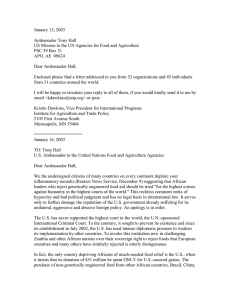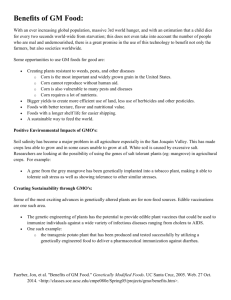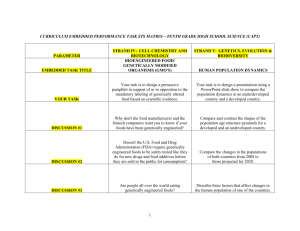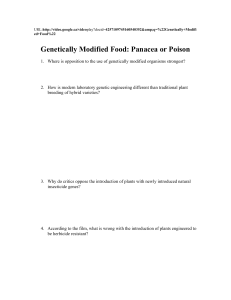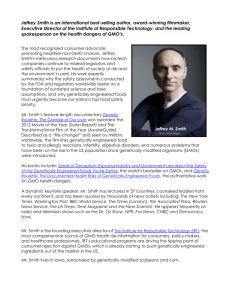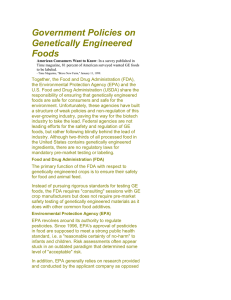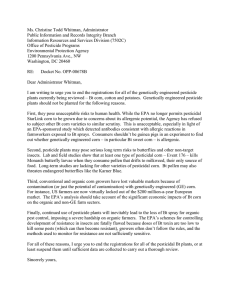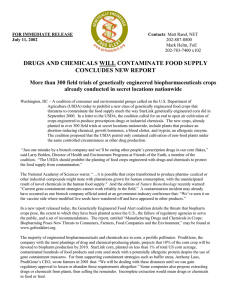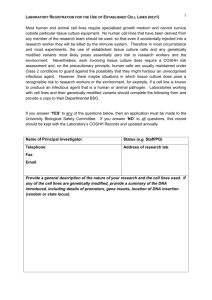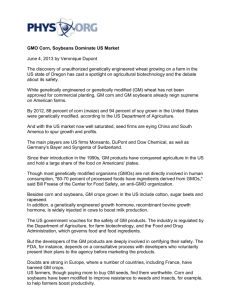Handout - Science and Me
advertisement
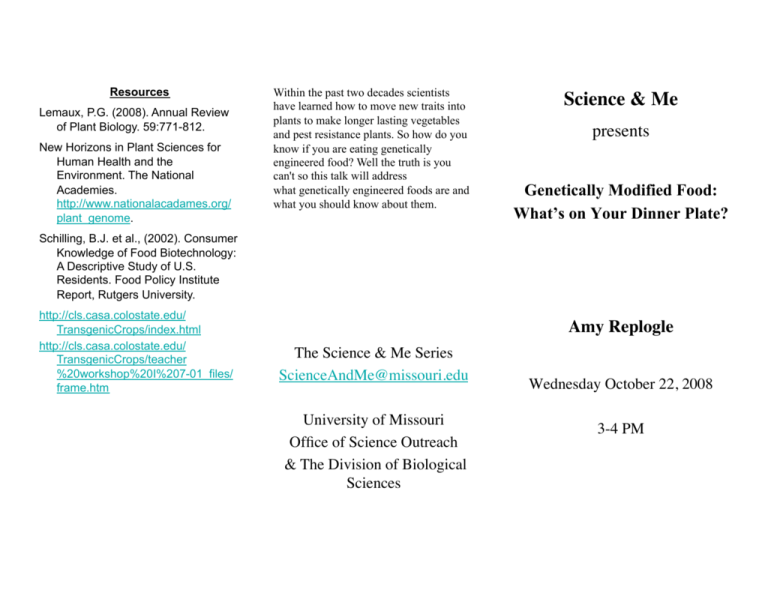
Resources Lemaux, P.G. (2008). Annual Review of Plant Biology. 59:771-812. New Horizons in Plant Sciences for Human Health and the Environment. The National Academies. http://www.nationalacadames.org/ plant_genome. Within the past two decades scientists have learned how to move new traits into plants to make longer lasting vegetables and pest resistance plants. So how do you know if you are eating genetically engineered food? Well the truth is you can't so this talk will address what genetically engineered foods are and what you should know about them. Science & Me presents Genetically Modified Food: What’s on Your Dinner Plate? Schilling, B.J. et al., (2002). Consumer Knowledge of Food Biotechnology: A Descriptive Study of U.S. Residents. Food Policy Institute Report, Rutgers University. http://cls.casa.colostate.edu/ TransgenicCrops/index.html http://cls.casa.colostate.edu/ TransgenicCrops/teacher %20workshop%20I%207-01_files/ frame.htm Amy Replogle The Science & Me Series ScienceAndMe@missouri.edu University of Missouri Office of Science Outreach & The Division of Biological Sciences Wednesday October 22, 2008 3-4 PM Genetically Modified Food: What’s on Your Dinner Plate? All food eaten today has been genetically modified. Genetic engineering transfers one gene into a plant for a new trait. No food can be guaranteed 100% safe. Bt Corn Tomatoes Corn Common genetically engineered traits are nutritional improvement and pest tolerance. Peanuts GE crops are not commercially available to consumers if they might cause an allergic reaction. Peanuts are available even though they cause allergic reactions. Traditional breeding transfers many genes into a plant for a new trait. Future of genetically engineered crops: Normal Rice Normal Corn Vitamin A Rice Corn with Bt toxin Medication Less Allergens
